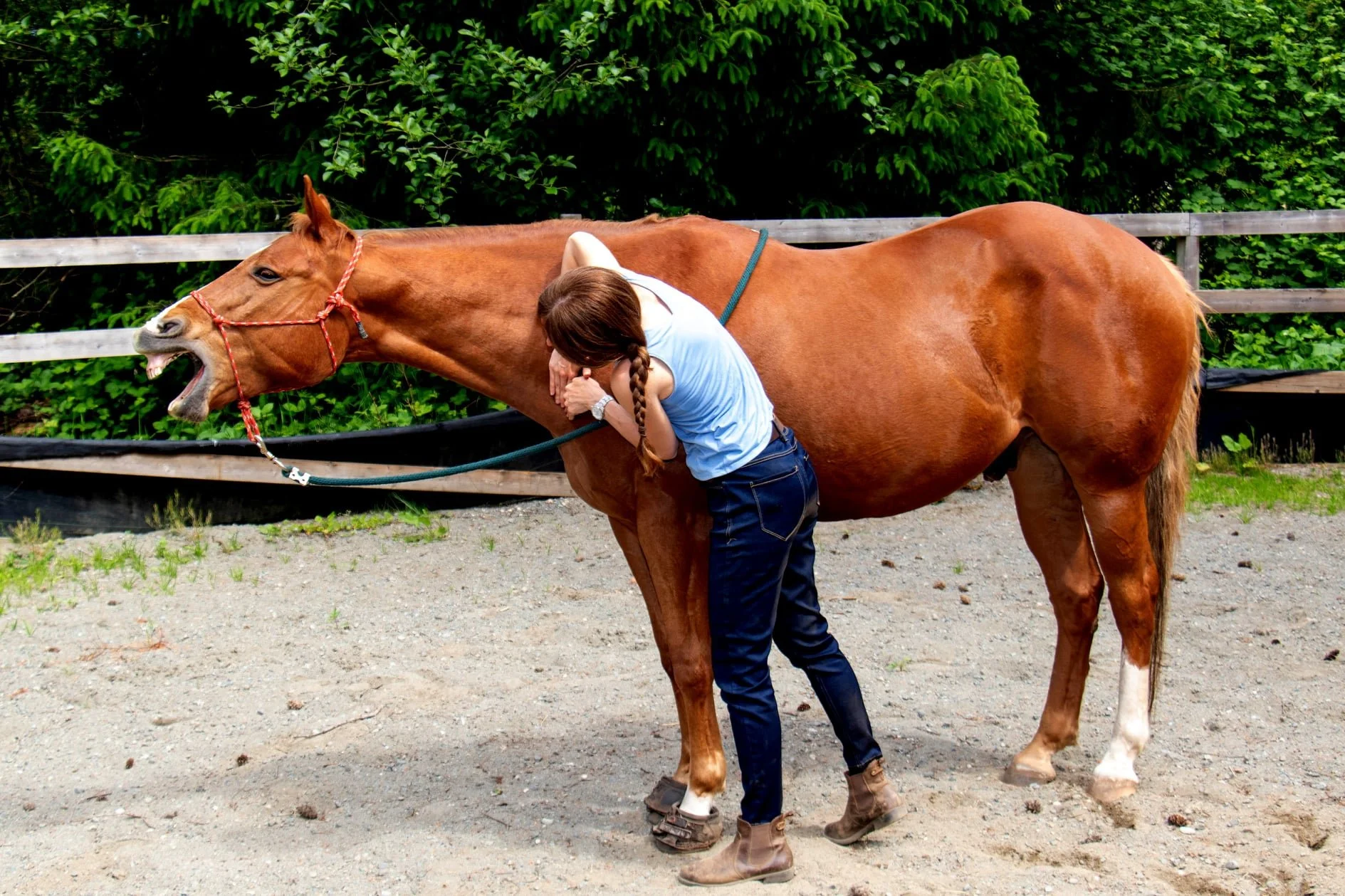Equine Osteopathy Sessions
Investment
Initial Session: $180.00 plus travel fees if applicable
Follow-up/Routine Session: $140.00 plus travel fees if applicable
How Long Does a Session Last?
Session length varies depending on your horse’s individual needs. Because all sessions are consent-based, the timing is guided by how long your horse is able and willing to receive support. Your horse's comfort and capacity are always prioritized.
Before our first session, you’ll receive an Intake Form where you can share key information such as your horse’s history, nutrition, exercise routine, husbandry practices, and your goals for your partnership. This helps us make the most of our time together.
Initial sessions aim to restore balance and communication between the hindquarters, thorax, and head - the three central units of the horse’s body. When these are aligned, the horse becomes centered, creating the foundation for healthy biological processes and functional movement.
Please allow 1.5 to 2 hours for the first appointment.
It’s recommended not to ride your horse the day after the session to allow time for integration. Gentle movement, such as turnout or hand-walking, is encouraged.
Follow-up or maintenance sessions generally last around 60 minutes. Since the three units of the body (head-thorax-hindquarters) have become more aligned from the first session, I am now provided with clues to the areas that need some extra support.
What Are the Benefits of Bodywork?
As prey animals, horses are highly skilled at compensating for discomfort, often masking pain until compensation is no longer possible. Bodywork is a powerful preventative tool, offering early detection and support before more serious issues arise.
Some of the many benefits of bodywork include:
Release of deep-seated physical and emotional tension
Enhanced circulation and lymphatic flow
Improved respiratory function
Stabilized metabolism
Increased emotional resilience and reduced anxiety
Reduction or resolution of symptoms such as colic, coughs, fecal water, and eczema
Improved posture and biomechanics
Reduced strain on muscles, fascia, tendons, and ligaments
Greater range of motion and flexibility
Injury prevention and long-term vitality support
Increased engagement, curiosity, and motivation
What modalities do you use in your sessions?
My approach is holistic and therapeutic, utilizing gentle and non-invasive methods of assessment and mobilization. Osteopathic/Cranial-sacral techniques, fascial release, stresspoint release, massage, proprioceptive tools and kinesiology taping are some of the modalities used within a session.
How do I best prepare my horse for bodywork?
To ensure the most effective session, it’s ideal that your horse is dry at the time of treatment.
If your horse follows set feeding times, try to schedule the session shortly after a meal. Horses who are hungry are often in a sympathetic (stressed) state, making it hard for them to focus and relax. Alternatively, you can offer a small snack, such as a flake of hay, just before the session to help them settle.
What others considerations should I keep in mind?
Creating a calm, familiar environment is essential for your horse to feel safe and receptive during the session. Ideally, the session should take place in a quiet space where your horse is comfortable and able to move freely if they feel the need. Avoid scheduling sessions around regular feeding times, as this can cause distraction or tension.
I typically do not work on horses in cross-ties, and I prefer that horses are not tied at all during bodywork. This allows for biodynamic movement and more natural behavioral feedback, helping me better understand how your horse is processing the session. It also gives your horse the freedom to fully relax - such as dropping their head or softening their topline - which is essential for the effectiveness of the work.
Whenever possible, please plan sessions for a time when your horse can avoid strenuous work the following day. The nervous and musculoskeletal systems continue to integrate the changes made during the session well after it ends, and rest supports that process.











